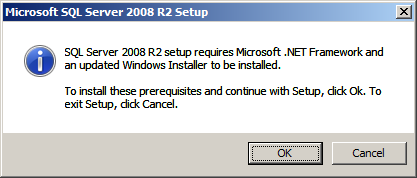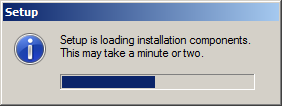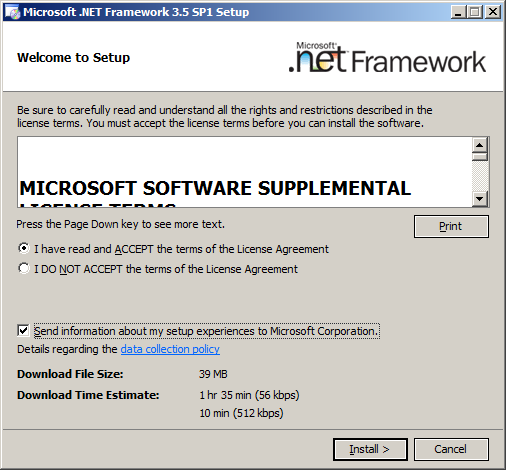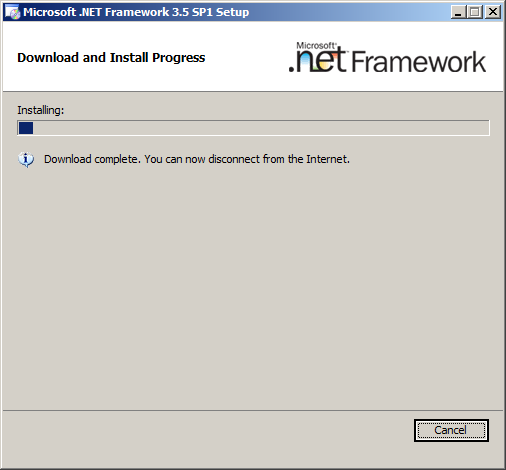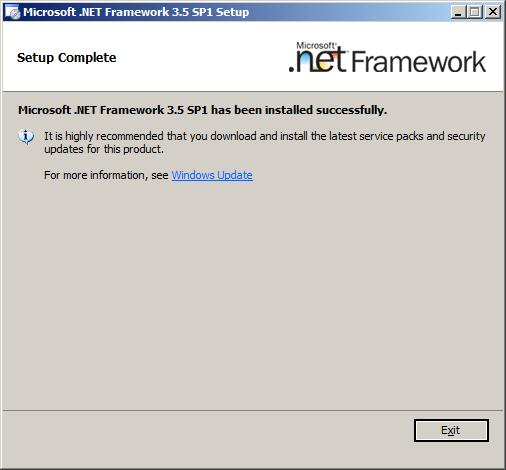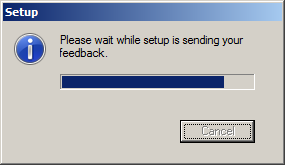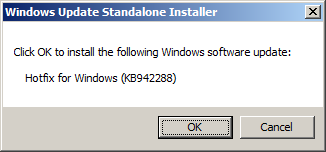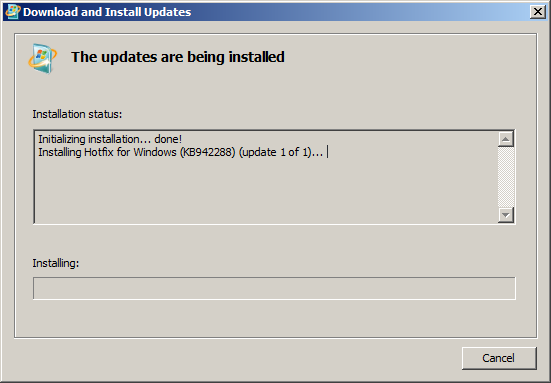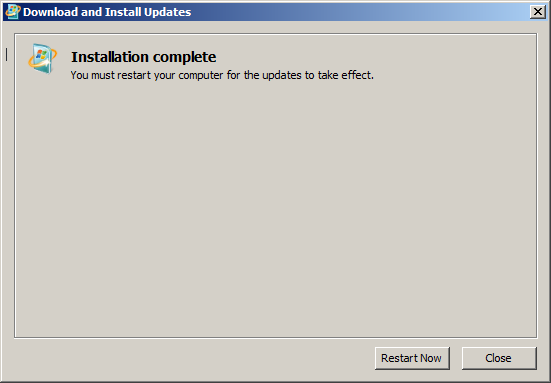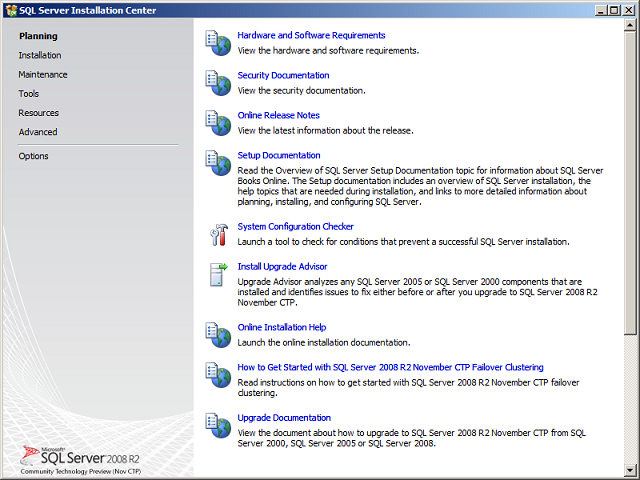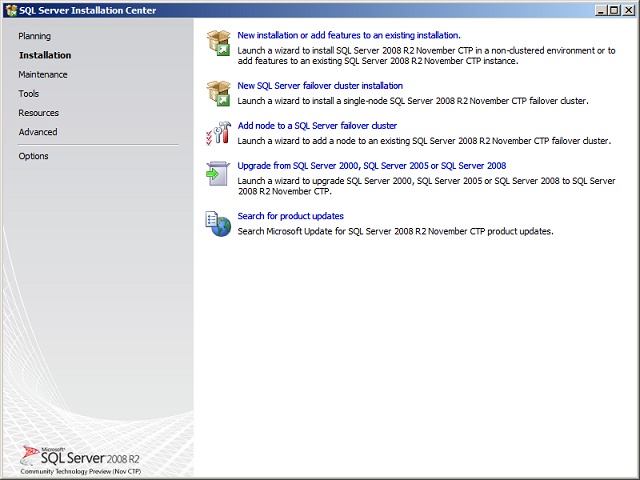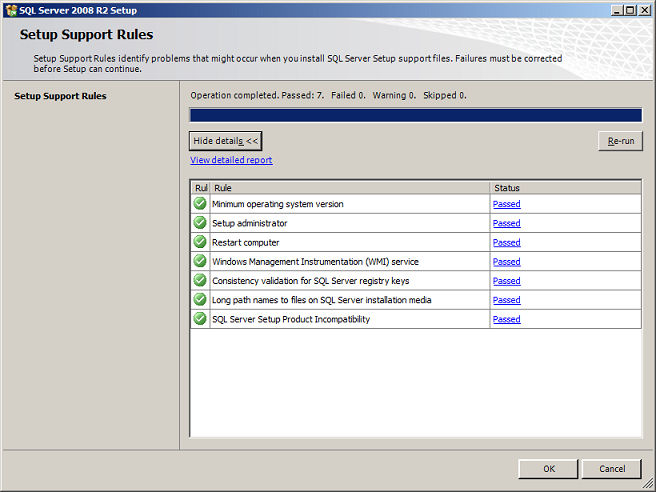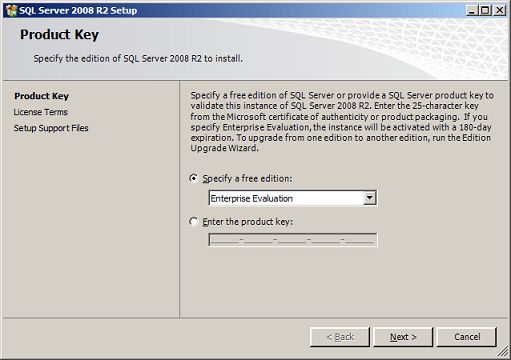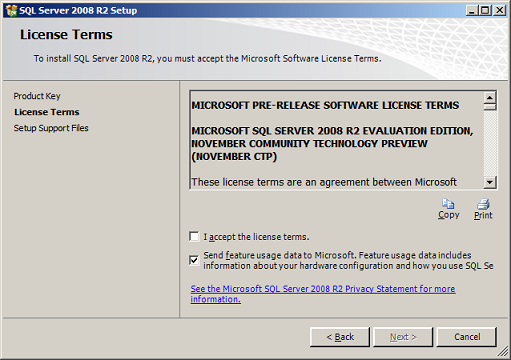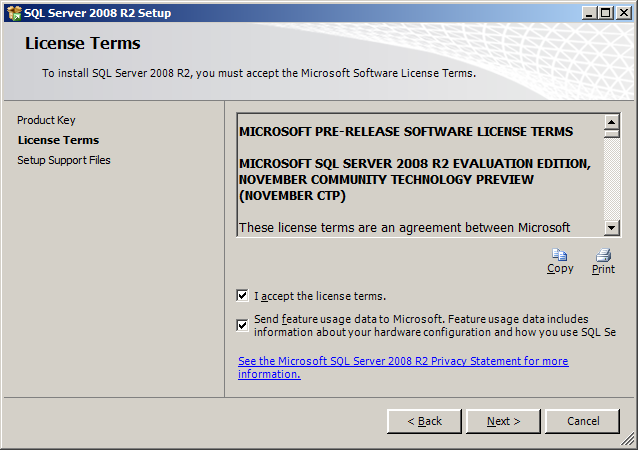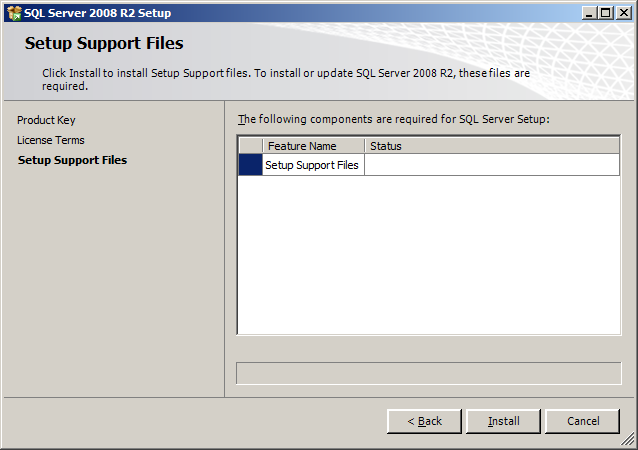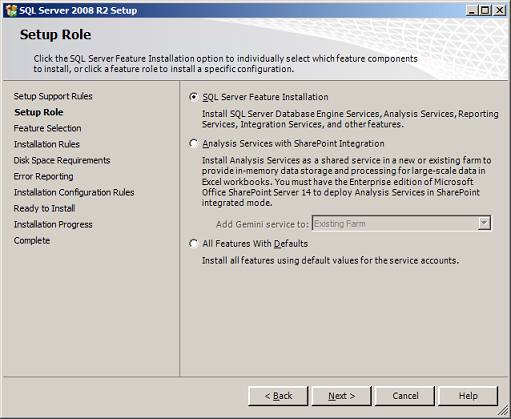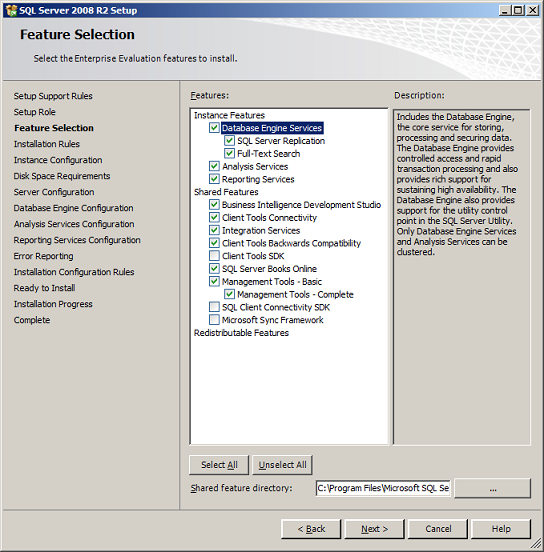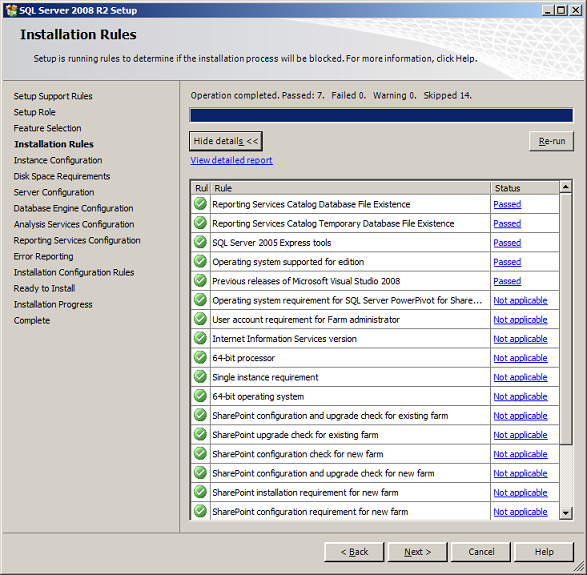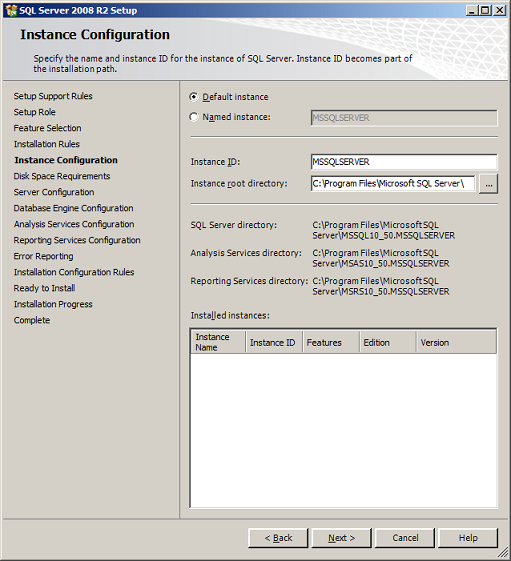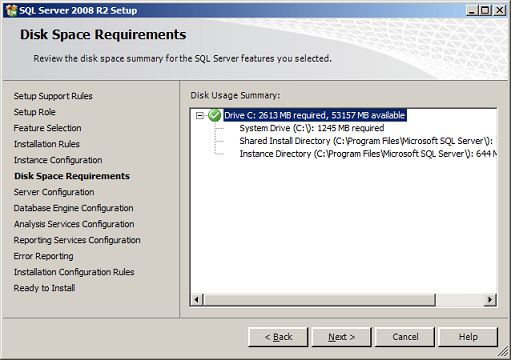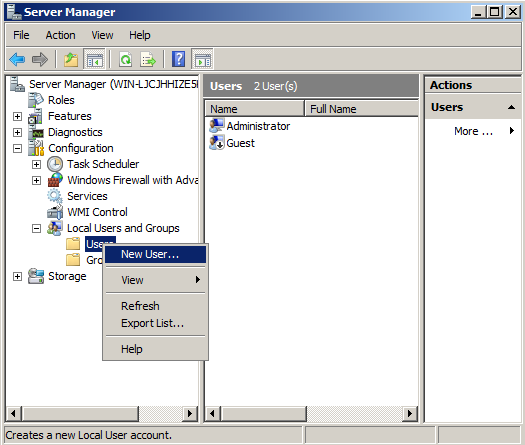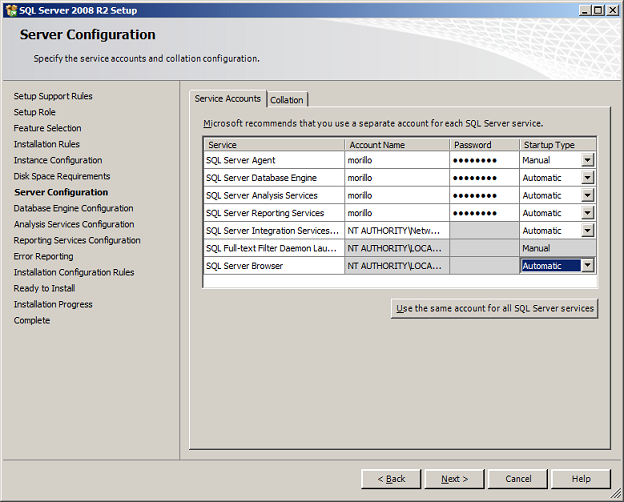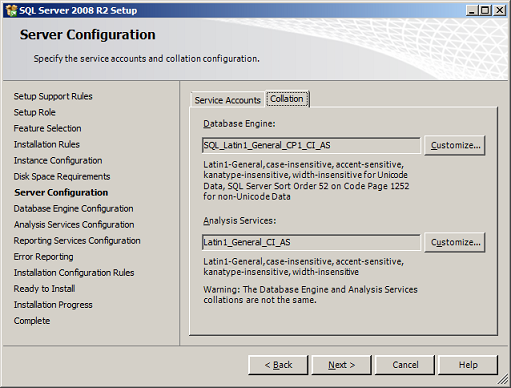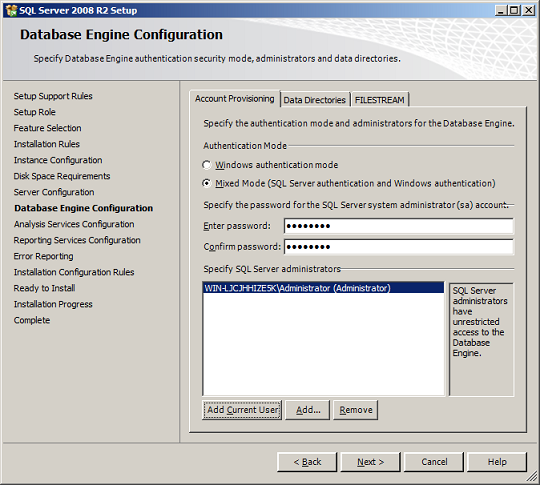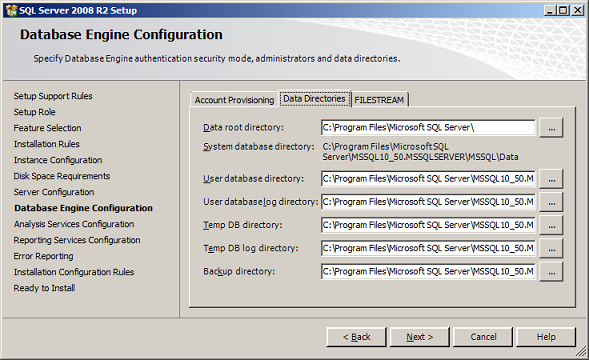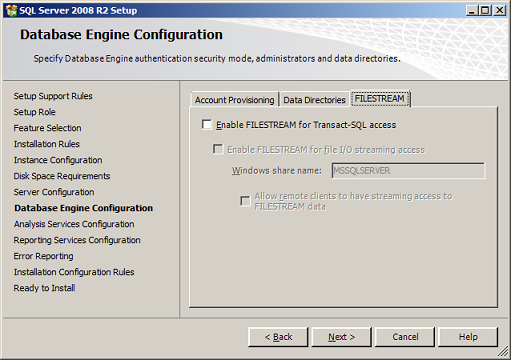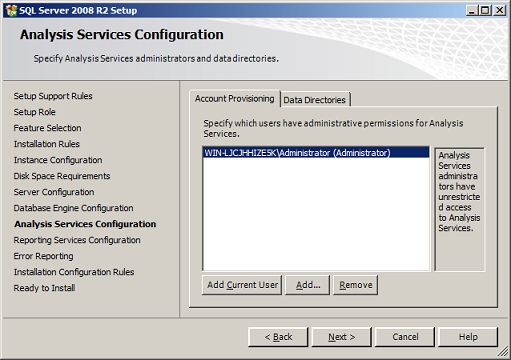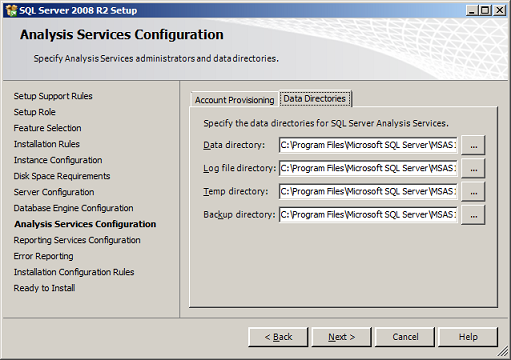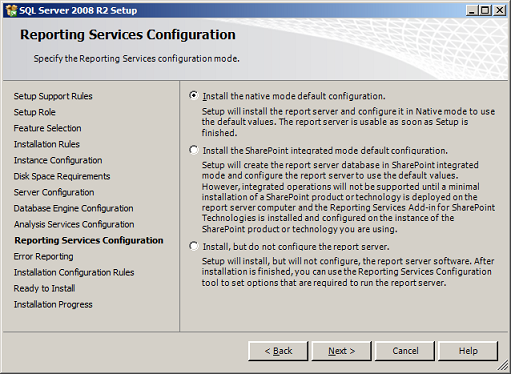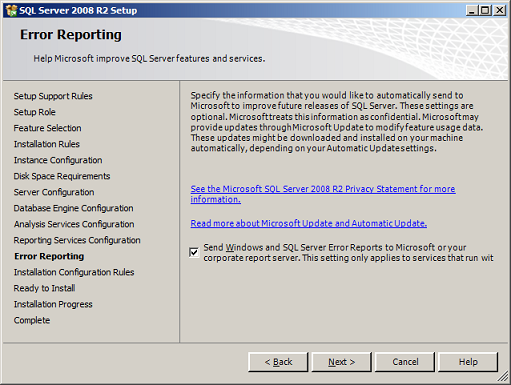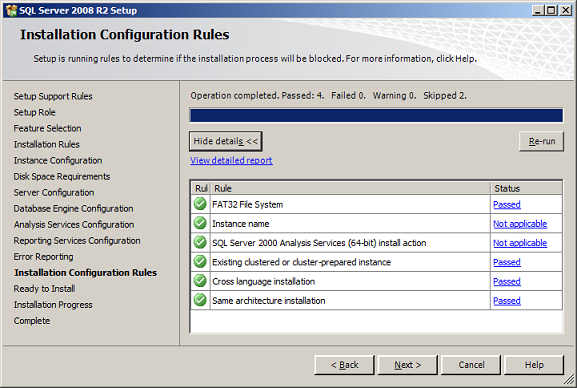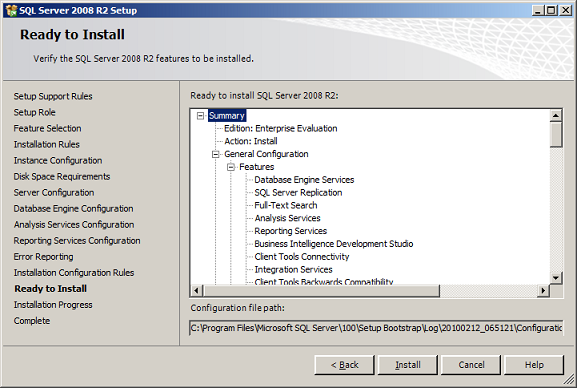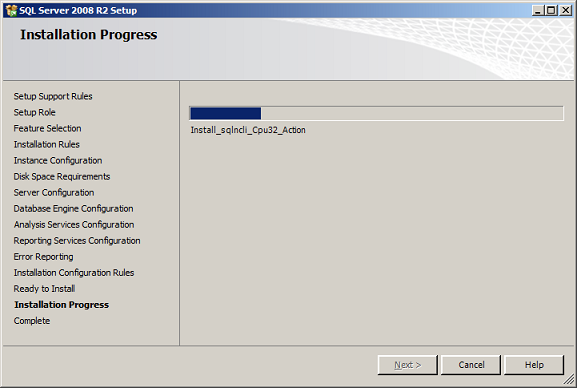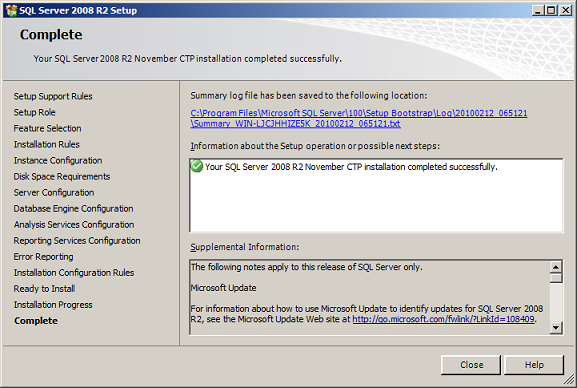One of the first things I always do after installing Visual Studio is to install SQL Server Management Studio (SSMS). Visual Studio 2010 installs SQL Server 2008 Express on your machine but doesn’t include SSMS. Although you can use Visual Studio to create/connect/design databases, I like having SSMS around for advanced management. I recall SSMS for SQL Server 2005 was a simple install, unfortunately they threw the kitchen sink into the SSMS 2008 installer and I’m always confused at which buttons I need to push to get it to do what I want. So I’m writing up this blog post for two reasons 1) So I remember the steps and 2) So you can be less frustrated :-) (BTW, a birdie tells me that the SQL team is looking at making this installer much simpler in the future. Hooray!)
Okay the first thing you need is to make sure you get the right version of SSMS. If you installed Visual Studio 2010 then you will need the 2008 version (not R2).
STEP 1: Download
Microsoft® SQL Server® 2008 Management Studio Express and select either SQLManagementStudio_x64_ENU.exe or SQLManagementStudio_x86_ENU.exe depending on your machine’s OS bit-ness. I’m running Windows 7-64bit so I’ll be detailing the steps as it pertains to that OS.
STEP 2: Make sure you’re logged in as an administrator of the machine then right-click on the exe you downloaded and select “Run as Administrator”. If you’re on Windows 7 then you’ll get a compatibility warning. Click past it for now to continue with the install. Later you’ll need to apply
SQL 2008 Service Pack 2.
STEP 3: You should now see the “SQL Server Installation Center” window. Yes it looks scary. Select the “Installation” tab.
STEP 4: Select “New SQL Server stand-alone installation or add features to an existing installation”. It will then run a rule check. Make sure there are no failures and then click OK.
STEP 5: The next step is misleading. The Setup Support Files window looks like it’s doing something and stuck on “Gathering user settings.” It’s actually waiting for you to click the Install button! Doh!
STEP 6: Another rule check. You’ll probably end up with a Windows Firewall warning this time. If you want to enable remote access to SQL Server you’ll need to
configure the firewall later. Since I’m using SQL Server Express for development purposes on this machine only, I won’t need to worry about that. Click Next.
STEP 7: Okay here is the step I always mess up because it’s just not intuitive at all. On the Installation Type window you have a choice between “Perform a new installation of SQL Server 2008” OR “Add features to an existing instance of SQL Server 2008”. You need to select new installation, NOT add features. I know I know, totally weird. You would think that since you just want to add SSMS that it would be Add features to existing instance – I mean I don’t want a new instance, just the dang tools. Sigh. Click Next.
STEP 8: Next you get the Product Key window. You obviously don’t need a product key for SQL Server Express since it’s free so just click Next.
STEP 9: Accept the License Terms and click Next.
STEP 10: Okay now for the window we’ve all been waiting for - Feature Selection. Check off “Management Tools – Basic” and then click Next.
STEP 11: Verify your disk space requirements and click Next.
STEP 12: Help Microsoft improve SQL Server features and services by selecting to send usage and error reports to them (or not). Click Next.
STEP 13: Another quick rule check runs. Click Next.
STEP 14: Now it looks like we’re ready to install. Click the Install button.
The install will kick off and will take about 5 minutes to complete.
STEP 15: Once the installation completes, click the Next button again.
STEP 16: Complete! Click the Close button and you should be all set.
STEP 17: Fire up SQL Server Management Studio! You should now see it in your Programs under Microsoft SQL Server 2008. Make sure you run it as an administrator for access to all the features.

















